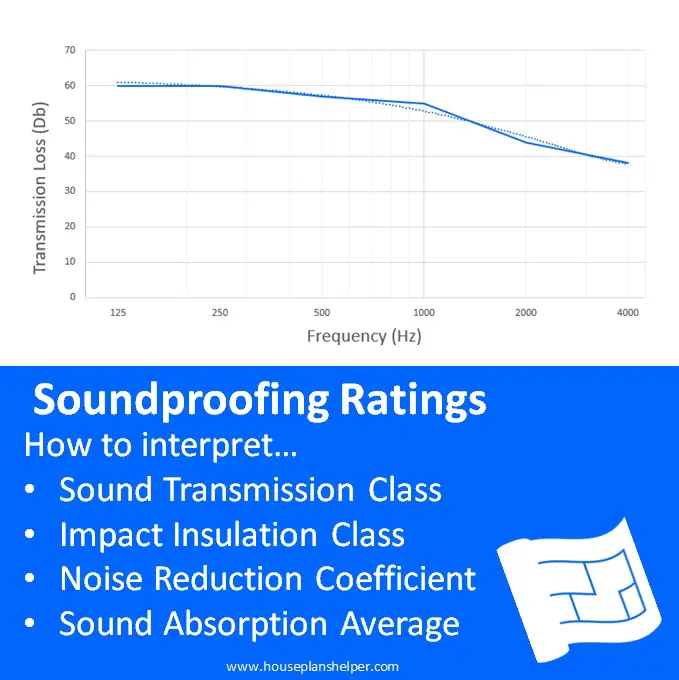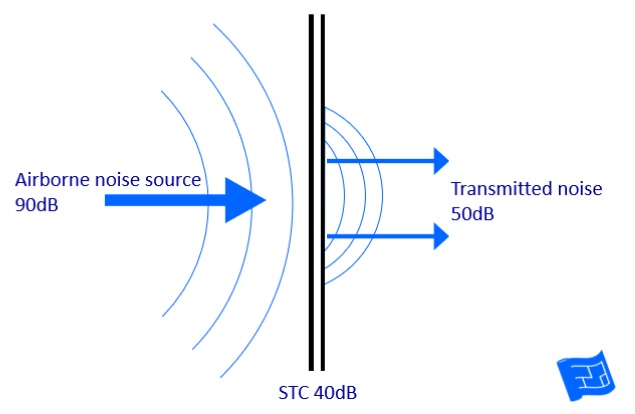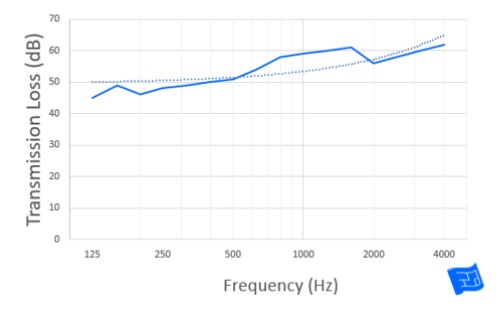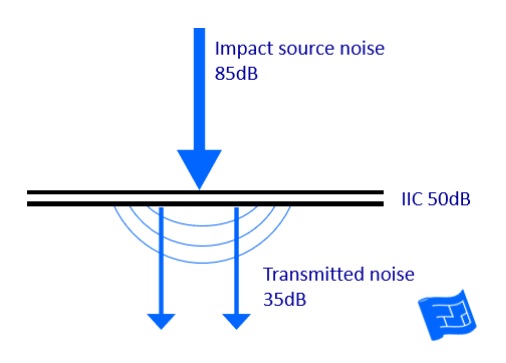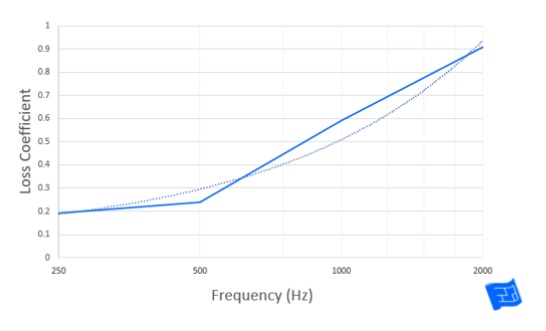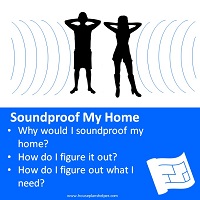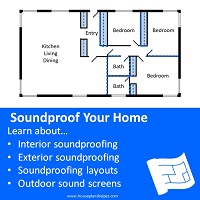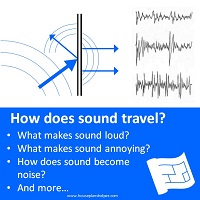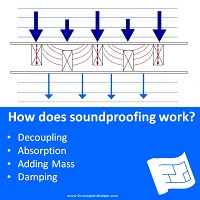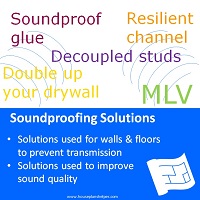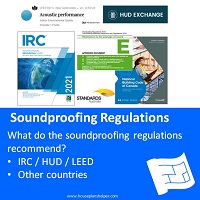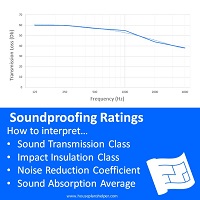- Home
- Soundproofing
- Soundproofing Ratings
Soundproofing Ratings
When you look at soundproofing ratings, they can look very simple on the surface. There are some things you should know to be able to interpret them accurately.
- STC – Sound Transmission Class
- IIC – Impact Insulation Class
- NRC – Noise Reduction Coefficient
- SAA – Sound Absorption Average
Soundproofing websites do a good job of explaining the basics or the ratings systems, but there are some important things you should know that aren’t made obvious.
It's a good idea to have a read of 'How does sound travel?' and 'How Does Soundproofing Work?' to get the most out of this page on soundproofing ratings.
For all the soundproofing ratings methods, remember that are all performed under lab conditions such as standard room volumes with no flanking noise through light switches or doors which exist in reality. So, in your home once it’s built, you won’t achieve the full extent of the performance advertised with the products.
Let’s take a closer look at the soundproofing ratings methods.
STC - Sound Transmission Class Soundproofing Ratings
- STC is the effectiveness of soundproofing materials in reducing the sound transmitted between two spaces divided by a floor or wall, window or door. The higher the STC, the more effective the sound proofing.
- STC is a measure of the decibel reduction that a wall / floor / window / door provides.
- STC is used to rate materials and wall / floor / window / door assemblies where the source of the sound is airborne.
- The higher the STC, the more effective the material or assembly is at preventing the transmission of sound.
- The STC soundproofing standard is based on the ASTM E413 standard.
Here's at able that shows a list of STC ratings and what you can here the other side of the wall.
| STC | What can be heard |
|---|---|
| 25 | Normal speech can be easily and distinctly understood. |
| 30 | Loud speech can be understood well, normal speech can be heard but not understood. |
| 35 | Loud speech audible but not intelligible. |
| 40 | Loud speech audible as a murmur. This is the point at which I'd consider your home will start to have some element of 'sound privacy' between your rooms. |
| 45 | Loud speech heard but not audible. Loud music can still be heard. |
| 50 | Loud sounds (including music) faintly heard. |
| 60+ | Superior soundproofing; most sounds cannot be heard. |
Things you should know about STC
Calculating noise reduction with STC
To calculate the noise reduction, in the simplest terms, you can take the noise level of the space where the noise originates from, subtract the STC and that will give you the noise level on the other side of the wall.
Take note of the notes regarding frequency below – this simple subtraction method is a simplified rule of thumb.
STC is a collection of test results summarized as one number
The STC of a product is always given as one number but the sound transmission is tested at a number of frequencies from 125 to 4000 Hz.
Take a look at some sample test results below. The STC of this material is given as 56dB but varies from 40dB at 125Hz to 60dB at 4000Hz.
STC is not the same for different types of noise
This follows along from the point above. Different types of noise have different frequency spectra. The 'how does sound travel?' page has a table of frequencies of common sounds in the home setting.
You’ll notice that traffic noise and bass are lower than 125Hz, and some soundproofing methods may not perform so well at these lower frequencies.
Before you decide on your soundproofing solution, ask the supplier about how the solution will perform at lower frequencies. Many manufacturers have these curves available online if you have a dig around their websites.
To acknowledge this, some products which aim to reduce noise from the outside (like windows) are rated by an OITC (Outdoor Indoor Transition Class) which works in the same way as STC but includes frequencies down to 80Hz.
STC ratings don’t add up
STC ratings cannot simply be added. If you have a simple wall with an STC of 35 and decide to add another sheet of drywall with STC of 20 you do not get a wall with an STC of 55. It would be more like 35.
IIC - Impact Insulation Class Soundproofing Ratings
- The IIC is a measure of sound absorption and vibration isolation.
- IIC is a measure of the decibel reduction that a floor provides.
- IIC is used to rate materials and floor assemblies where the source of the sound is impact or structure borne noise (like a footstep).
- The higher the IIC, the better the sound insulation.
- The IIC soundproofing standard is based on the ASTM E989-06 standard.
Things you should know about IIC
Calculating noise reduction with IIC
To calculate the noise reduction, in the simplest terms, you can take the noise level of the space where the noise originates from, subtract the IIC and that will give you the noise level on the other side of the wall.
Take note of the notes regarding frequency below – this simple subtraction method is a simplified rule of thumb.
IIC is a collection of test results summarized as one number
The IIC of a product is always given as one number but the sound transmission is tested at a number of frequencies from 125 to 4000 Hz.
Take a look at some sample test results below. The IIC of this material is given as 52dB but varies from 60dB at 125Hz to 40dB at 4000Hz.
IIC is not the same for different types of noise
This follows along from the point above. Different types of footsteps have different frequency spectra. A stiletto heel on a hard surface has a different frequency spectrum to a heavy footstep in socked feet on a carpet.
Footsteps can include frequencies as low as 40Hz and methods such as decoupling and adding mass will be required to reduce these sounds.
IIC ratings don’t add up
STC ratings cannot simply be added. If you have a simple floor with an IIC of 25 and decide to add another sheet of drywall with STC of 10 you do not get a wall with an STC of 35. It would be more like 28.
NRC - Noise Reduction Coefficient Soundproofing Ratings
- NRC is a measure of sound absorption. It’s a coefficient so it ranges from 0 to 1 as described in the table below. It’s a measure of the proportion of sound absorbed.
- The higher the coefficient, the more effective the noise reduction.
- NRC is usually used to rate materials which aim to absorb sounds and reduce reverberation levels within a space, products like acoustic wall and ceiling panels.
- The NRC soundproofing standard is based on the ASTM C423 standard.
Here's a table that explains how much sound is absorbed.
| NRC | Amount of sound absoroption |
|---|---|
| 0 | No sound absorption. All the sound bounces back into the room. |
| 0.25 | 25% of sound is absorbed, while 75% is reflected back into the room |
| 0.5 | 50% of sound is absorbed, while 50% is reflected back into the room |
| 0.75 | 75% of sound is absorbed, while 25% is reflected back into the room |
| 1 | All sound is being absorbed with none being reflected back into the room |
Things you should know about NRC
NRC is a collection of test results summarized as one number
The NRC of a product is always given as one number but the sound absorption is tested at a number of frequencies from 250 Hz to 2000 Hz.
Take a look at some sample test results below for different absorbing materials.
NRC ratings are not the same for different frequencies
You will find some products with an NRC of greater than one and of course this doesn't mean that the material can absorb more than 100% of the sound. Ratings of greater than one have come about because the original NRC was derived from the best known sound absorber at the time. As time has gone by, materials have been invented that are better than this original material.
SAA - Sound Absorption Average Soundproofing Ratings
There’s a new rating on the block – Sound Absorption Average (SAA) which is gradually superseding the NRC.
- SAA is a measure of sound absorption. It’s a coefficient so it ranges from 0 to 1. You can think of it as the proportion of sound absorbed per square foot.
- The higher the coefficient, the more effective the noise reduction.
- SAA is usually used to rate materials which aim to absorb sounds and reduce reverberation levels within a space, products like acoustic wall and ceiling panels.
Things your should know about SAA
The SAA is essentially the same as NRC except it’s calculated over more points over a slightly wider frequency range between 200 and 2500Hz.
All the points about NRC also apply to SAA.

